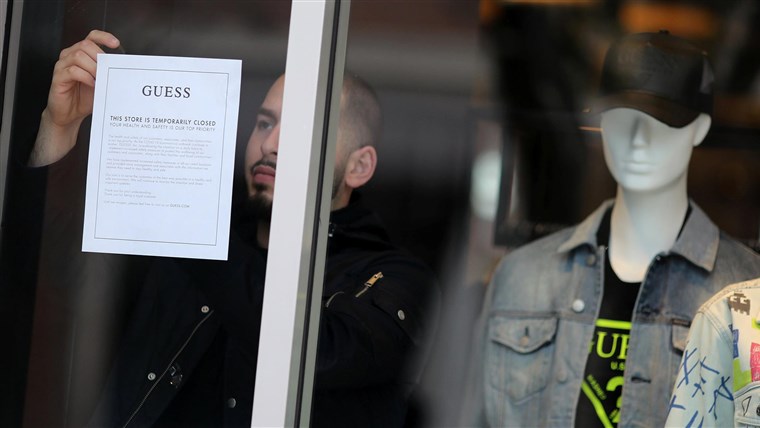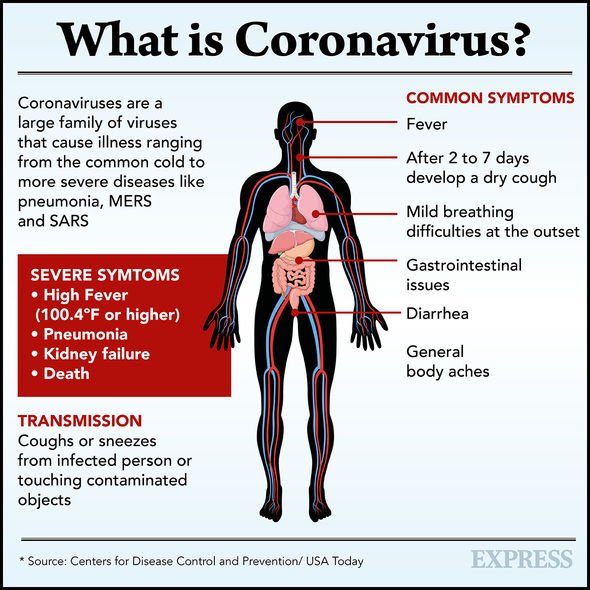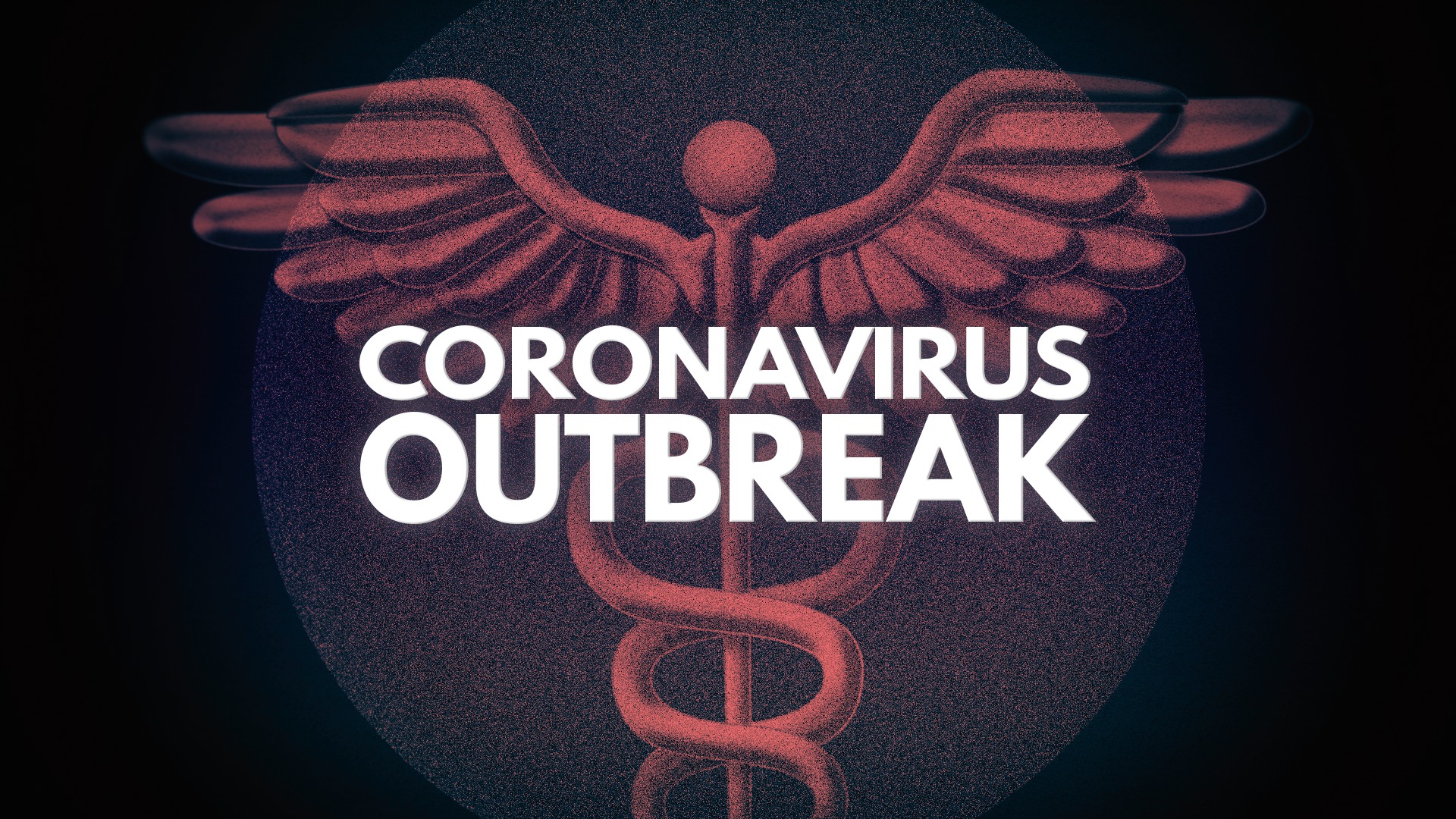
As concerns about the coronavirus rippled across the globe, the US president declared the Covid-19 outbreak a national emergency as public life in America continues to grind to a halt. Schools have closed to millions of students, creating anxiety for working parents across the country. Travel bans have been widened and some cities across America have issued curfews or “shelter in place” orders to slow the spread of the virus. More “shelter in place” orders are expected as the number of confirmed cases continues to rise and has now been found in all 50 states.
Shelter in place orders will come from local government rather than federal. A growing number of countries have also imposed lockdowns that effectively shut down public life, but the details of such lockdowns vary dramatically. Italy banned all public gatherings and set a 6 p.m. curfew but allowed travel for work or health reasons, while in China, millions of residents are restricted from even going to shop for groceries.
The “shelter-in-place” order that San Francisco adopted has fairly large exemptions for health, work, food and even exercise. City officials ordered residents to remain in place at their homes except for essential activities, essential business, and essential government functions, including tasks essential to maintain health and safety, such as obtaining medicine or seeing a doctor or getting necessary services or supplies for themselves or their family or household members, such as getting food and supplies, pet food and supplies necessary for staying at home.
The order also includes:
- Engaging in outdoor activity, such as walking, hiking or running provided that they maintain at least 6 feet of social distancing.
- Caring for a family member in another household.
- Caring for elderly, minors, dependents, people with disabilities or other vulnerable persons.
Treasury Secretary Steven Mnuchin outlined a variety of potential proposals to Senate Republicans as part of a legislative package to help Americans and industries that are reeling from the coronavirus. The administration proposed an initial $250 billion could be sent to Americans as early as the end of April if it can muster congressional approval.
Sen. John Thune noted that getting cash assistance to Americans is something that has historically taken some time, but “I think there are ways now electronically that you can process things more quickly.” The proposal has fairly widespread support from Senate Republicans, who say it will offer immediate assistance to Americans impacted by the virus. Some lawmakers have varying ideas about how the proposal should work, including who should receive the payments and how much each American should get.
Read more

The World Health Organization is warning the number of cases of COVID-19 caused by coronavirus is approaching 100,000 worldwide, with more than 3,100 deaths due to the illness. Most of the deaths and infections have occurred in China, where health officials reported 139 new cases and 31 new deaths recently.
South Korea confirmed 438 new cases, making their total number of confirmed cases over 5,700. Italy has over 3,000 confirmed cases and more than 100 deaths have been reported. Officials have closed down schools in Italy, South Korea, Japan, France, Pakistan, Iran and elsewhere, with nearly 300 million children kept home from school worldwide.
In the United States, there are now more than 300 confirmed cases and the death toll has reached 11 — with 10 of the deaths occurring in Washington state. California recorded its first coronavirus death: an elderly man who traveled on a Princess cruise ship that departed from San Francisco and traveled to Mexico in February. Governor Gavin Newsom has ordered the ship quarantined off the coast of California and is airlifting tests for passengers and crew. Governor Newsom made the announcement as he formally declared a state of emergency across California.
The CDC issued new guidance for clinicians on screening patients for novel coronavirus and assessing their risk for infection. The agency also started shipping its coronavirus assay to labs across the U.S. and in other countries. According to the US Centers for Disease Control and Prevention, 13 states in the US have reported confirmed or presumptive positive cases of COVID-19. Washington State has the highest number of cases with 70 confirmed illnesses and 10 associated deaths. California has 60 positive cases and 1 death.
Of the confirmed cases in California, 42 of them are linked to repatriation or international travel. Cases are rising rapidly in New York, where there are 22 confirmed cases across the state with an additional 24 testing results pending, and 122 individuals under investigation. In response to the rise in cases, the US Senate passed an $8.3 billion bill to fight the outbreak. This came just a day after the bill was approved by the House of Representatives. More than $3 billion is expected to be put into research and development of treatments, vaccines, and testing.
Read more

The death toll from Coronavirus (COVID-19) cases has surpassed 3,000 with the number of cases reaching over 90,000. While 51,000 people who have contracted the illness have since recovered, the head of the World Health Organization (W.H.O.) said that the global mortality rate for Covid-19 was 3.4 percent, a figure that primarily reflects the outbreak in China, where the vast majority of cases have been detected.
The organization’s director general, Dr. Tedros Adhanom Ghebreyesus, said at a news conference that Covid-19 is deadlier than the seasonal flu but did not transmit as easily. Dr. Tedros said. “By comparison, seasonal flu generally kills far fewer than 1 percent of those infected.” He added “While many people globally have built up immunity to seasonal flu strains, Covid-19 is a new virus to which no one has immunity,” meaning more people can be infected and some will suffer severe illnesses, Dr. Tedros said. The coronavirus does not transmit as efficiently as the flu but “causes more severe disease.”
While the prospect of being infected with a new virus can be frightening, the CDC warns that the symptoms to look out for are fever, coughing and shortness of breath. These symptoms usually appear between two days and two weeks of exposure to the virus. According to a report in the Journal of the American Medical Association, as many as 98% of COVID-19 patients have a fever, between 76% and 82% have a dry cough, and 11% to 44% report exhaustion and fatigue.
The disease appears to become more severe with age, with the 30 to 79 year-old age range predominating the detected cases in Wuhan. The severity of COVID-19 symptoms can range from very mild to severe. People who are older or have existing medical conditions, such as heart disease, may be at higher risk of serious illness. This is similar to what is seen with other respiratory illnesses, such as influenza.
It’s unclear exactly how contagious the new coronavirus is but it appears to be spreading from person to person among those in close contact. It may be spread by respiratory droplets released when someone with the virus coughs or sneezes. Although there is no vaccine available to prevent infection with the new coronavirus, you can take steps to reduce your risk of infection. Although there is no vaccine available to prevent infection with the new coronavirus, you can take steps to reduce your risk of infection. WHO and CDC recommend following the standard precautions for avoiding respiratory viruses:
- Wash your hands often with soap and water, or use an alcohol-based hand sanitizer.
- Cover your mouth and nose with your elbow or tissue when you cough or sneeze.
- Avoid touching your eyes, nose and mouth if your hands aren’t clean.
- Avoid close contact with anyone who is sick.
- Avoid sharing dishes, glasses, bedding and other household items if you’re sick.
- Clean and disinfect surfaces you often touch.
- Stay home from work, school and public areas if you’re sick.
Read more

The deadly coronavirus that originated in Wuhan, China less than a month ago, has spread to 13 other countries. It has spread to Australia, Cambodia, Canada, France, Japan, Malaysia, Nepal, Singapore, South Korea, Taiwan, Thailand, the US, and Vietnam. The US now has five confirmed cases of a deadly coronavirus that originated in Wuhan, China, less than a month ago. The confirmed cases in the US are in Washington, Illinois, California and Arizona. Four of the US patients had recently traveled to Wuhan and one was a Wuhan resident traveling through California.
The outbreak has killed 81 people and infected more than 2,800 in mainland China. Authorities have sealed off the city of Wudan, the epicenter of the outbreak. All of Wuhan’s public transportation — including buses, ferries, and trains have been shut down. Trains and airplanes coming in and out of the city were halted and roadblocks were installed to keep taxis and private cars from exiting the city.
The World Health Organization called the lockdown of the city of 11 million people unprecedented. In an effort to contain the outbreak, two smaller Chinese cities, Huanggang and Ezhou, travel restrictions were also imposed. Authorities then expanded the number of cities on lockdown to 10. The lockdown is affecting some 33 million people, as medical workers struggle to slow the spread of a novel strain of coronavirus.
The coronavirus family is a large group of viruses that typically affect the respiratory tract. Coronaviruses can lead to illnesses such as the common cold, pneumonia, and severe acute respiratory syndrome (SARS), which resulted in 8,000 cases and 774 deaths in China from November 2002 to July 2003. Patients with the new coronavirus — known as 2019-nCoV — have reported symptoms like fever, coughing, and difficulty breathing. Those who have died were elderly or otherwise unwell, according to Chinese officials. No deaths have been reported outside China.
Initially, authorities suspected that the coronavirus — which likely originated at a wholesale seafood market — could spread to humans only from animals but it was later determined that humans could transmit the virus to one another. The CDC recommends avoiding all nonessential travel to China’s Hubei province, where Wuhan is. They also recommend that people traveling to China avoid contact with sick people, particularly those with cold symptoms like coughs or runny noses. Travelers are advised to wash their hands frequently with soap and water and scrub for at least 20 seconds. They should refrain from touching their eyes, nose, or mouth with unwashed hands. Elderly travelers and anyone with preexisting health conditions should consult a doctor before traveling to China.
The CDC said the risk in the United States is still low but they are advising precautions and monitoring the situations. All of the US patients who have tested positive for the virus have been isolated and are recovering. The CDC said 32 people who had contact with the US cases have tested negative for the virus and the agency plans to test more people in the coming days.
Read more






